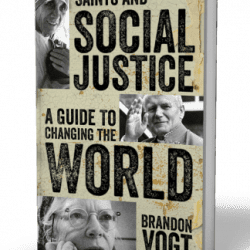We seem to be living in a new Gilded Age. Just look at some basic indicators. The level of inequality has peaked once again, and is back to where it was on the eve of the Great Depression. Over the past 40 years, real wages have stagnated, while the profit share of national income has risen to record levels. Normally, we expect real wages to track labor productivity. But across the developed countries since 1999, average labor productivity grew twice as fast as average wages. There is no sign of these trends abating – since 2009, 95 of all the income gains in the US accrued to the top 1 percent.
This is going hand-in-hand with cultural changes and shifts in social norms. We are living through a “de-leveling” of society where the rich retreat to their own enclaves and the values of the market trump the values of common citizenship. We are back to the old societal divisions between “labor” and “capital”, something that had become somewhat anachronistic in the postwar era. We are back to a time when the major income division is not between high-waged and low-waged individuals, but between those who rely on wages and those who rely on investment income – earned versus unearned wealth. Not surprising, social cohesion or social trust – the glue the binds society together – is coming part at the seams.
We can see other trends that herald a new Gilded Age. Once again, the economy is marked by industrial concentration and conglomeration, especially in the powerful financial sector. The very wealthiest corporations – including the extractive industries – are once again dominating politics, and succeeding in passing legislation that serves their own narrow interest. Once again, we are in the midst of dizzying industrial revolution – electricity then, ICT today – that can bring great rewards to a small elite. Once again, we are seeing the financialization of the economy and the rising influence of the financial sector, spurred by a wave of deregulation that began in the 1980s. This is going hand in hand with a sharp rise in financial globalization, which we know from the evidence makes banking and financial crises more prevalent, and inequality worse. Here, we unlearned some of the great lessons from the past – the postwar era proved remarkably stable and free of crises, largely because financial activity was tightly regulated.
Indeed, our business cycles even look like the business cycles of the Gilded Age. As Paul Krugman has said about the financial crisis, “this isn’t your father’s recession — it’s your grandfather’s recession”. In other words, the economic cycles of the modern era look more like prewar than postwar cycles. Most postwar recessions came from the Fed trying to cool down the economy and tame inflation. But the Great Recession has an older vintage – it arises from wild swings in credit and risk taking with the ability to bring down the entire economy.
I should point out that one thing is very different about modern economic cycles – unlike in the prewar era, we are now far better at using monetary and fiscal policies to smooth out big fluctuations. Back in 2008, we avoided a second Great Depression, which was not a foregone conclusion – the preconditions for collapse were all there. But because we pushed opened the monetary floodgates, and let public sector deficits counteract private sector surpluses, we averted the worst. This is something that is not appreciated enough.
These big economic trends – globalization, technological change, financialization – can help us explain rising inequality and declining wage shares. I believe the evidence points to financialization as the leading culprit. In trying to isolate the causes of the falling wage share over the past few decades, the International Labor Organization breaks it down as follows: financialization (46 percent), globalization (19 percent), technology (10 percent), declining union density and government spending (25 percent).
Financialization works through numerous channels, including a switch to corporate governance systems that put a huge premium on maximizing shareholder value above all other interests, in tandem with an aggressive returns-oriented culture. Financialization and financial globalization also weaken the bargaining power of workers. As has been documented, the rise in political influence of the financial sector has led to economic policies that predominantly benefit the rich. It is no accident that the tax system became less progressive, or that the bargaining power of workers was systematically undermined.
All of this points in one direction: the economic concerns of today are eerily similar to the economic concerns of hundred years ago – inadequate wages, poor social mobility, lack of access to universal healthcare and basic social safety nets, limited labor rights and attacks on unions, a tax system that benefits the rich in general and unearned wealth in particular.
And yet, there is one way in which this new Gilded Age is very different from its predecessor – in the way political life has responded and in the language it uses. I’m not talking about entranced partisanship, which was always there. I’m talking about how people talk today about the economy. To go back to Krugman’s image, people are using their father’s language, rather than their grandfather’s. Public figures today do not sound like the two Roosevelts. They do not paint their arguments in terms of morality, community, or virtue.
Part of the problem, of course, stems from the success of monied interests in setting the terms of the debate, so that a decline in economic opportunity is interpreted as “takers” stealing from “makers”, and even a modest attempt to expand access to healthcare gets cast as a socialist plot to destroy the country. And even acknowledging a division between capital and labor will open you up to charges of class warfare.
But a much bigger part of the problem lies in a shift in thinking. Thanks to the legacy of the 1960s and the 1980s, we now prefer the language of individualism over the language of community, the language of rights over the language of duties and responsibilities. We seem to have forgotten that economics is as much about justice as about production. So the only responses to rising inequality are either to dismiss its importance in a market economy, or paper over it with some minimal technocratic attempts at redistribution. Nowhere do we talk about the duties and responsibilities of business – to workers, to broader society, to the environment.
Of course, Catholic Social teaching has always talked about these things. And it has always been rigorous and consistent – laying down the same core principles and seeking to adapt them to the particular circumstances of time and place.
So it is instructive to look at what the Church was saying during the last Gilded Age. Of course, the teaching at the time was heavily guided by Rerum Novarum, the first major social encyclical, and later by Quadragesimo Anno, issued in the midst of major economic upheaval. But since I am mainly (although not exclusively) talking about the US context, let’s look at the what the US bishops were saying at the time. And here, the best source is the 1919 Program for Social Reconstruction, penned by John A. Ryan in the aftermath of the first world war.
This was a powerful document, and it stands the test of time. Its recommendations are just as relevant to our day, almost a century later. Its diagnosis of the problem is quite clear: “insufficient incomes for the majority of wage-earners, and unnecessarily large incomes for a small minority of privileged capitalists”. The same is true today. Its recommendations include a living wage underpinned by a legal minimum wage, a social insurance system, labor participation in industrial management, and abolition or heavy regulation of monopolies. The same recommendations hold today.
The document was also quiet clear in the particular duties of employers that go beyond the role of the state: “[The capitalist] needs to learn the long-forgotten truth that wealth is stewardship, that profit-making is not the basic justification of business enterprise, and that there are such things as fair profits, fair interest and fair prices…The employer has a right to get a reasonable living out of his business, but he has no right to interest on his investment until his employees have obtained at least living wages.”
It’s been a while since the US bishops spoke about economic injustice in such strident terms. It’s been a quarter century since they issued their last major document on the economy. Given that we are in a second Gilded Age, coming out of the worst financial crisis since the Great Depression, the time has come for a new direction. And with the papacy of Pope Francis, I am optimistic. I look forward to a shift backwards – toward an older way of thinking and acting. Some say the Church thinks in centuries, and certainly what it thought a century ago matters for today too. More than ever.











